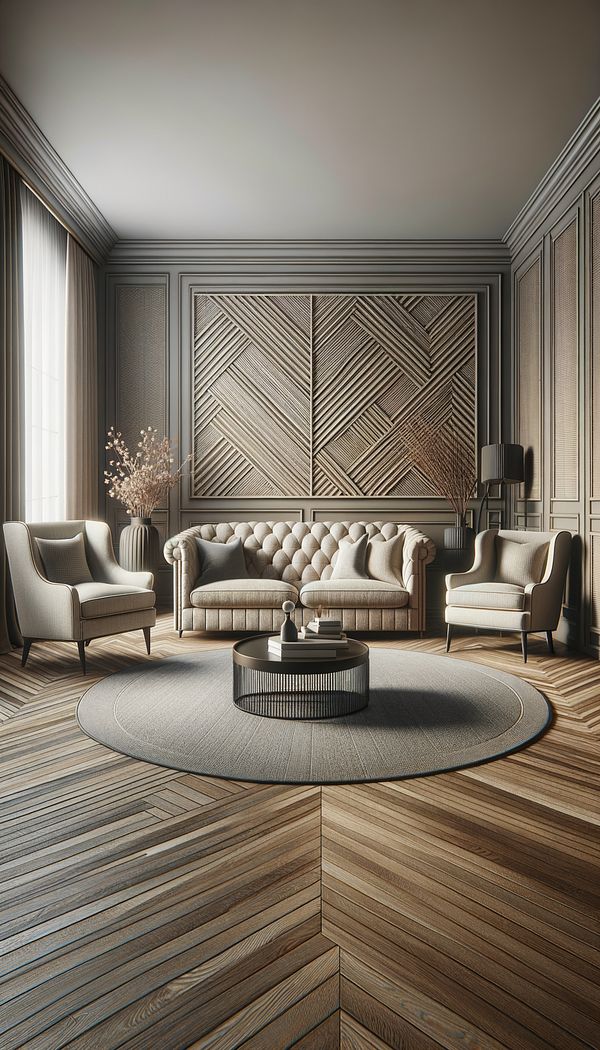What is Twill?
Twill is a type of textile weave characterized by a diagonal pattern.
Description
In the realm of interior design, twill is a versatile fabric that brings both visual and tactile appeal to various spaces. This type of weave creates a diagonal pattern that not only adds texture but also enhances the durability of the fabric. Twill is made by passing the weft thread over one or more warp threads then under two or more warp threads, with a "step" or offset between rows to create the characteristic diagonal pattern.
Twill fabrics are known for their strength, and their tight weave makes them resistant to wrinkles and tears, making them an excellent choice for upholstery projects, window treatments, and even wall coverings. The diagonal weave also helps hide stains and wear, which is particularly beneficial in high-traffic areas of a home or commercial space. Additionally, twill can be made from a variety of materials including cotton, silk, and polyester, which allows for a wide range of textures and colors.
The beauty of twill lies not only in its resilience but also in its versatility. The fabric's sophisticated texture can complement a wide array of design styles, from classic to contemporary. It's no wonder that twill is a popular choice among interior designers looking to add depth and dimension to their projects.
Usage
Twill is commonly used in interior design for upholstery projects, such as covering sofas, armchairs, and ottomans. It's also popular for window treatments, including drapes and curtains, as well as wall coverings and decorative accents like throw pillows. Designers may choose twill for its texture, durability, and the ability to hide wear and stains in high-traffic areas.
FAQs
-
What materials can twill be made from?
Twill can be made from a variety of materials, including cotton, silk, polyester, and wool, allowing for different textures and aesthetic effects.
-
Is twill suitable for all types of furniture?
Yes, due to its durability and aesthetic versatility, twill is suitable for a wide range of furniture, from sofas and armchairs to ottomans and dining chairs.
-
How does the diagonal weave of twill benefit interior design projects?
The diagonal weave of twill adds texture and depth to fabric, making it visually interesting. It also increases fabric durability and hides stains and wear, which is beneficial for high-traffic areas.
Practical Application
When choosing twill for interior design projects, consider the type of weave and the material it's made from to ensure it meets the requirements of your space. For high-traffic areas, opt for a durable twill made from materials like cotton or polyester. Additionally, use the rich texture and pattern of twill to add depth to your designs, whether in upholstery, window treatments, or decorative accents. Always consider the overall design style of the space to ensure that the twill fabric complements other elements in the room.
-
Design Styles478 articles
-
Decorative Techniques322 articles
-
Materials & Textiles360 articles
-
Textiles & Upholstery252 articles
-
Mother of PearlMother of Pearl is the iridescent inner shell layer of certain mollusks.
-
Wall MirrorA wall mirror is a mirror designed to be mounted on a wall.
-
Wainscot ChairA wainscot chair is a type of wooden chair characterized by its paneled construction, often featuring intricate carvings and a high back.
-
Center GlideCenter Glide refers to a mechanism used in furniture design, especially in drawers, that allows for smooth opening and closing.
-
Platform FoundationA platform foundation is a type of bed base constructed from a flat, rigid surface designed to support a mattress without the need for a box spring.
